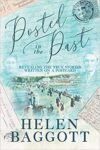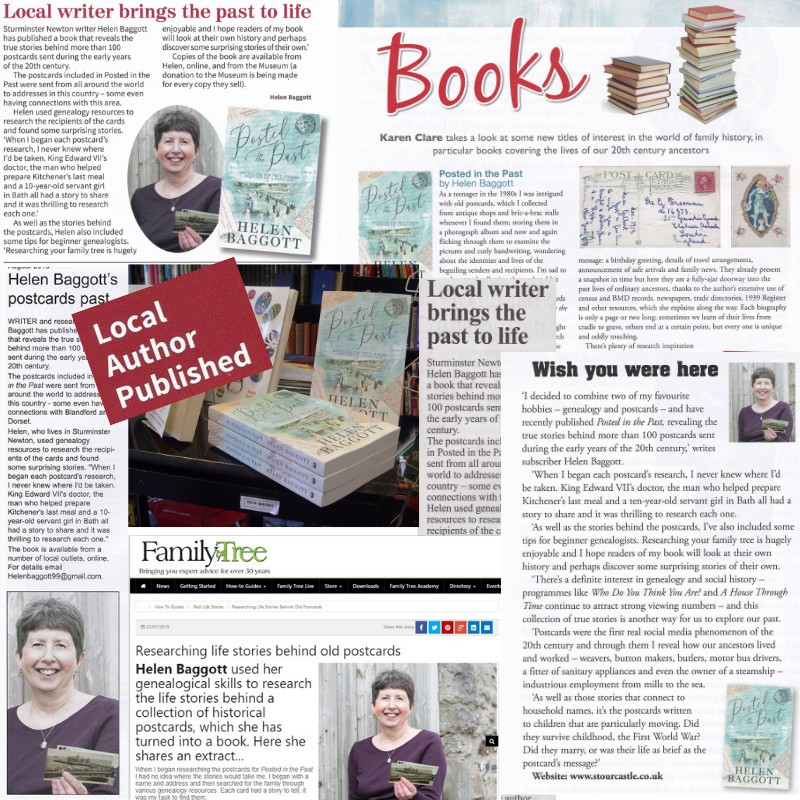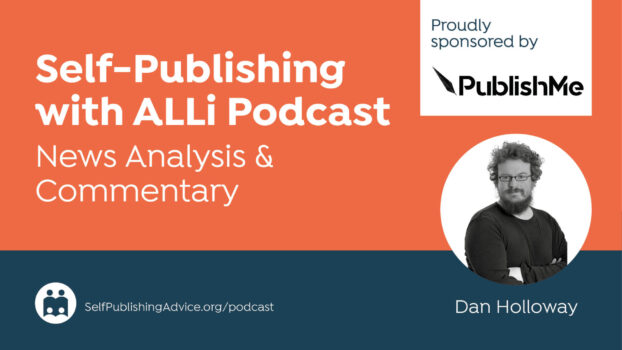PR can feel like a mystery to writers. It's done by experts and those in the field or the industry. But author member, Helen Baggott is here to remove the mystery and tell us how we can DIY PR as indie authors.

Helen Baggott
When I talk to other authors about their marketing strategy, how they plan to recoup their costs, I tell them, ‘No one will knock on your door and ask if you’ve written a book’. Authors have to reach out to readers.
In June I published Posted in the Past– a non-fiction book about the true stories written on postcards sent a hundred years ago. My marketing campaign began more than a year before publication – sharing images of postcards two or three times a week on dedicated Facebook and Twitter accounts. Followers didn’t necessarily convert into book buyers, but they did help share the information when the book was published.
Pre-Publication DIY PR
Social history and genealogy (used in the research) are hot topics at the moment, especially with the success of TV’s Who Do You Think You Are? so I planned to give talks to local groups (U3A, family history, etc.) and, hopefully, sell copies of the book. Groups schedule their calendars up to a year in advance so before the book was finished, I contacted those in my region. I soon had bookings from late summer into 2020. Even if I don’t sell copies at a talk, the fees help recoup my book’s costs. I’ve also added my details to three databases for speakers.
 After Publication DIY PR
After Publication DIY PR
When the book was published, I contacted local papers and magazines – beginning with those produced by communities. They appreciate receiving ready-to-print articles and all those I submitted were used. My local museum offered to stock the book and I pay a donation for every copy sold. This made those community articles easier to place and it gave me a local outlet.
Community radio stations are a great way to spread the word. One station added the interview to their website with some blurb about the book and a link to my website – a wonderful advert that cost just my time.
The postcards in the book were sent to addresses in the UK and I researched regional magazines. This was hit and miss with regards to success – but still worth the effort of tweaking a press release to include that particular area’s relevance to the book. Accompanying a press release with a professional-looking Advance Information sheet is essential.
While I waited for the book to become available via distribution I contacted local shops – not just bookshops. If they sold gifts, I thought they might sell my book. This proved worthwhile because those that bought it weren’t interested in sale or return – just buying it as they do their other stock. To make it financially viable I only contacted shops that were accessible and in areas I was happy to visit. When I delivered to one shop, I spotted a poster for a talk at their local museum. I was already booked there later in the year and the owner is now planning a display in the window nearer the time.
I’d had some photographs taken by a professional photographer before the book was published and I included one with any information sent out.
Connect Your Book to Magazine Themes
Knowing that potential readers would be interested in postcards, nostalgia, or genealogy, I contacted any magazines that reflected those topics and sent review copies. So far, the book has been reviewed in Family Tree and others have expressed an interest. Although these magazines are published in the UK, it’s clear from the readers’ letters that subscribers are from around the world (many of the postcards connect with America and Canada). As well as their review of the book, Family Tree invited me to contribute a guest blog for their website and that carries links to my own website and to Amazon.
 Picture Postcard Monthly (with subscribers in 24 countries) and Card Scene commissioned articles. Those articles and my own images (subject to copyright and terms) can be added to my ALCS and DACS accounts (in the UK) – earning licensing fees in the future. Card Scene was new to me and it was a surprise when the editor contacted me, having bought the book (perhaps the exception to my own rule!).
Picture Postcard Monthly (with subscribers in 24 countries) and Card Scene commissioned articles. Those articles and my own images (subject to copyright and terms) can be added to my ALCS and DACS accounts (in the UK) – earning licensing fees in the future. Card Scene was new to me and it was a surprise when the editor contacted me, having bought the book (perhaps the exception to my own rule!).
Think About Libraries
I contacted Resource Managers in library headquarters – beginning with those that covered the PLR sampling for the current year (I had registered the book as soon as it was published). By the time I did this, I was able to add copies of the first magazine review and a screenshot of the book’s Amazon #2 ranking. I explained why the book was relevant to a particular region. This information was posted out – I didn’t want to end up in a spam folder. For obvious reasons, I didn’t include the Amazon information in any releases to bookshops.
I’ve also put the research to another use and am sharing my experiences with writers at a fee-paying workshop in November.
It's Not Hard Work
All of that might sound like hard work. It was work, but it wasn’t hard. I needed a break from my next book, and promoting the first in the series was almost like a holiday. Researching where to find readers, and knocking on those doors, was essential. I’d recommend that all authors – fiction and non-fiction – familiarize yourselves with your market. It might sound obvious, but unless you reach out to them, potential readers won’t know you even exist.
How to DIY PR for #Indie Authors @SelfPubSupport #selfpublishing #IARTG #ASMRG #amwriting #writingcommunity #writetip Share on X
OVER TO YOU
Have you done any DIY PR? What tips or tricks could you share? Did you see positive results from your efforts?




